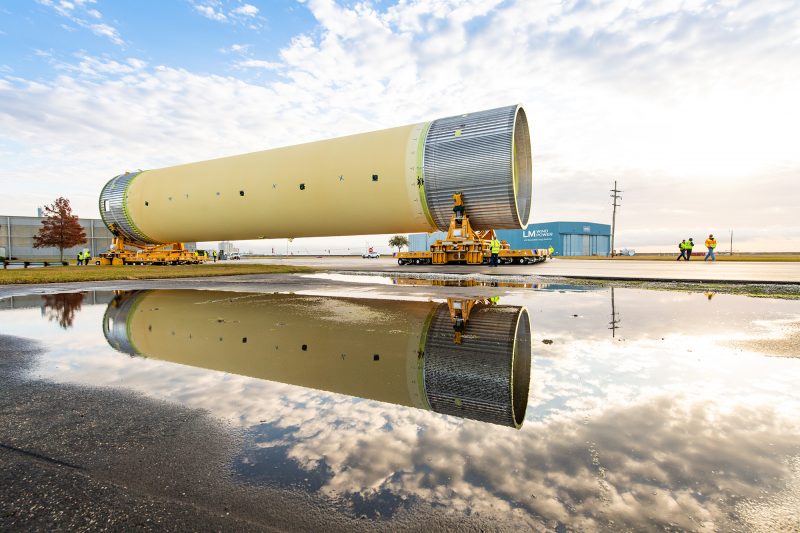NASA chief acknowledges more trouble with SLS rocket
In this photo obtained from NASA, technicians at NASA’s Michoud Assembly Facility in New Orleans, move the largest piece of structural test hardware for the new deep space rocket, the Space Launch System (HO)
Washington (AFP) – NASA’s administrator said Wednesday its next heavy-lift rocket, the SLS, is running into additional development delays, and the space agency now wants to use private launchers for its next Moon mission.
Boeing has spent years developing the SLS, or Space Launch System, which would be the most powerful rocket ever built, with the goal of resuming manned space missions to the Moon. A capsule for astronauts, Orion, is being built by Lockheed-Martin and Europe for the missions.
After a three year delay, a first unmanned mission around the Moon and back, dubbed EM-1, has been scheduled for June 2020.
But NASA administrator Jim Bridenstine told a Senate hearing that the “SLS is struggling to meet its schedule” and won’t be ready in time for the EM-1 mission.
“Last week it came to our attention that we’re not going to be able to maintain the schedule,” he told the Senate Commerce, Science and Transportation Committee.
It is the first time that NASA has clearly acknowledged the extent of the problems with the SLS, which according to an inspector general’s report last August has so far cost the space agency more than $12 billion to develop.
Bridenstine then made the shocking announcement that he wants to entrust the EM-1 mission in June 2020 to existing private launch systems, instead of waiting for SLS to be ready.
He did not say which private company he had in mind, but SpaceX would be a natural candidate with its Falcon Heavy rocket. United Launch Alliance’s Delta IV Heavy also would be a capable alternative.
United Launch Alliance is a joint venture of Lockheed and Boeing. SpaceX was founded by billionaire Elon Musk.
“We have amazing capability that exists right now that we can use off the shelf in order to accomplish this objective,” Bridenstine said.
The new plan would consist of first launching the Orion capsule, and then follow it with the launch of an upper stage for propulsion. The two elements will then dock in orbit for the voyage around the Moon.
No rocket in existence today is capable of lifting both elements together, because of their weight, which is why NASA needed the more powerful SLS.
“I want to be clear, we do not have right now an ability to dock the Orion crew capsule with anything in orbit. So between now and June of 2020, we would have to make that a reality,” Bridenstine said.
“NASA has a history of not meeting launch dates, and I’m trying to change that,” he said.
Disclaimer: This story is published from a syndicated feed. Siliconeer does not assume any liability for the above story. Validity of the above story is for 7 Days from original date of publishing. Content copyright AFP.


